America's Problem

Seventy-two years ago, mass shootings were a rarity… now they are the norm. In 1949, Howard Unrah killed 13 civilians, it would be another seventeen years until another mass shooting. Now, they are weekly…
It has been thirty years since gun reforms were last implemented. Thirty years of murder after murder, mass shooting after mass shooting, without any action from the US Senate. But alas, it now appears they have reassessed the situation and passed the most sweeping gun control bill in decades. The new legislation is a breakthrough in a 29-year stalemate on gun reform. Republicans and Democrats have finally compromised to announce a gun violence law with bipartisan support. The decision comes after two devastating mass shootings that left America reeling. It is the most impactful gun control statement since 1993 when Bill Clinton enacted “Brady” background checks and the banning of assault weapons, which has since expired.
But for every step forward, America takes a step back. In the midst of these discussions, the US supreme court has ruled that all “law-abiding” Americans in New York can carry a loaded but concealed handgun in public without a permit. The supreme court’s decision to strike out a century-old law, at a time when gun violence was listed as the leading cause of death among youths and adolescents, and when a mass shooting had taken place in that same state just months before, underlines how out of touch the supreme court is with reality. This baffling announcement ignores the fact that nine in ten Americans want stricter gun laws. Even the New York Governor, Kathy Hochul, opposed the legislation calling the decision “reckless” and “reprehensible”. Reinstating a law, originally stricken from the record in 1911, is the supreme court flexing its muscles for the Republican party. The law favours conservative ideals and reintroduces a vision of the wild west.
The new legislation signed off by Joe Biden imposes tougher checks on young buyers, encourages states to implement "red flag" laws – a law that is rarely enforced but is supposed to remove firearms from people considered a threat - and requires private sellers to conduct thorough background checks. The bill represents a modest but telling shift on an issue that has defied compromise since the early 90s. Also, although President Biden admits the bill “doesn’t do everything I want”, like increasing the minimum age and banning assault rifles and high-capacity magazines, which he has long advocated for, these changes could be monumental in the lives they save. Most notably, the proper application of “red flag” laws. Statistics show that mass shooters expressed an interest in harming others in 46% of shootings, additionally, 36% of perpetrators were previously known to be suicidal. Removing guns from people in crisis could be significant.
However, not everyone agrees, Mike Hammond, spokesperson for Gun Owners of America, says: “We have serious problems with these “red flag” gun confiscation laws”. He continued by describing a hypothetical situation: “What happens is an angry ex-girlfriend can drop a dime on an individual in the middle of the night. Invariably, a judge will permit the red flag order even though it’s an affidavit [confession] with absolutely no evidence to back it up. In 19 states, there is no requirement of proof for your affidavit. So, on the basis of an unproven affidavit, police turn up and confiscate all of that individual’s guns”.
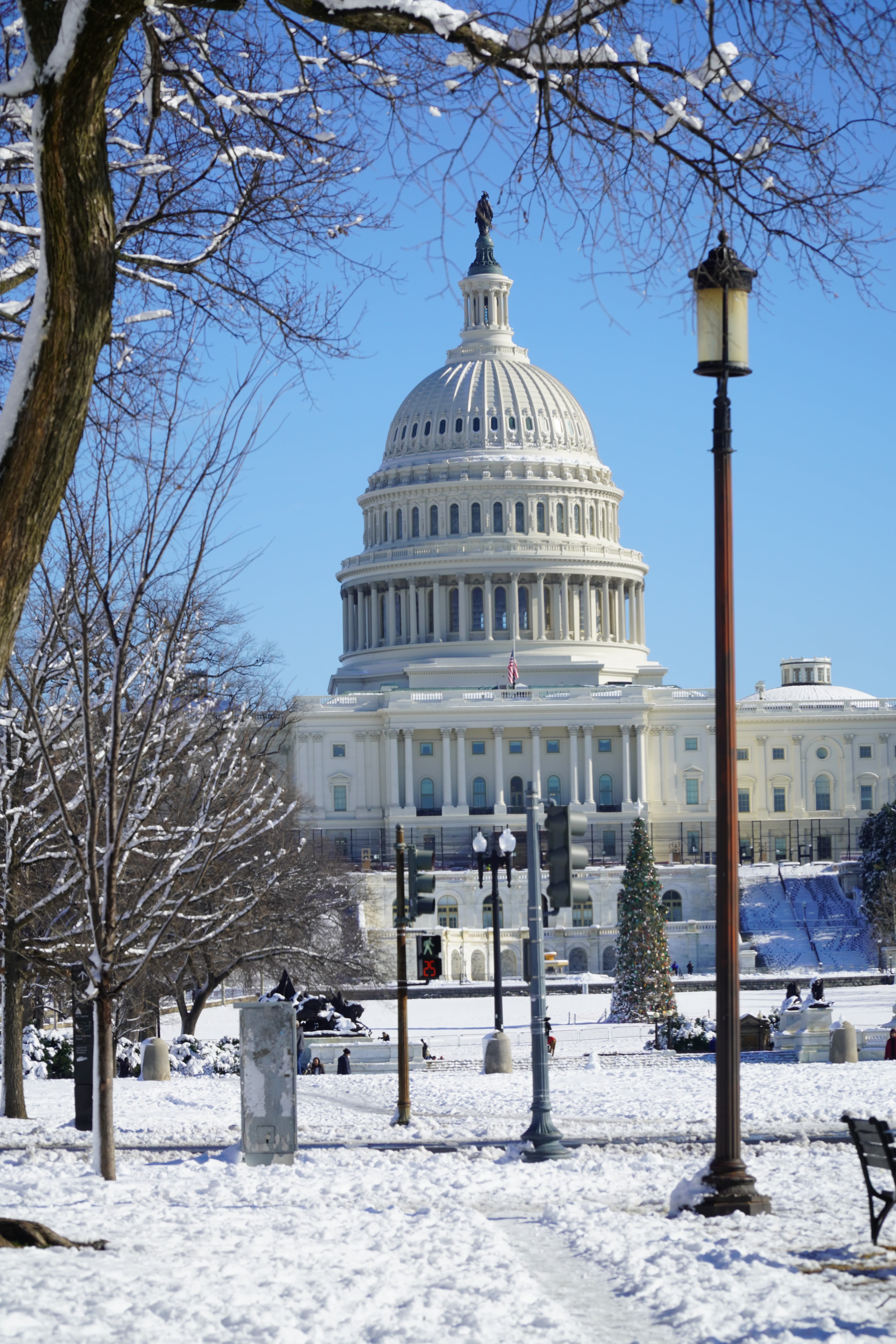
The US Capitol (Photo Credit: Ian Hutchinson)
The US Capitol (Photo Credit: Ian Hutchinson)
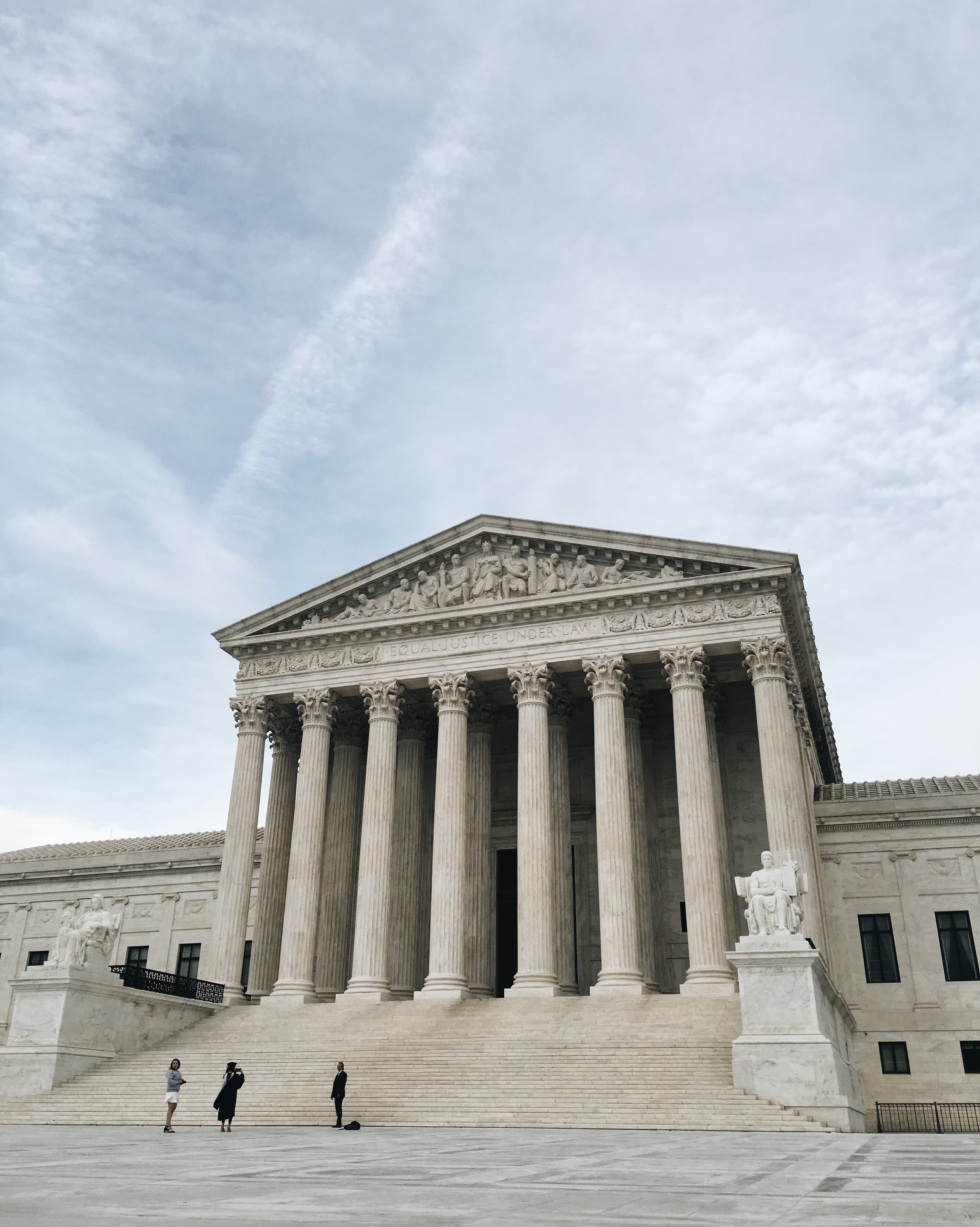
US Supreme Court (Photo Credit: Anna Sullivan)
US Supreme Court (Photo Credit: Anna Sullivan)
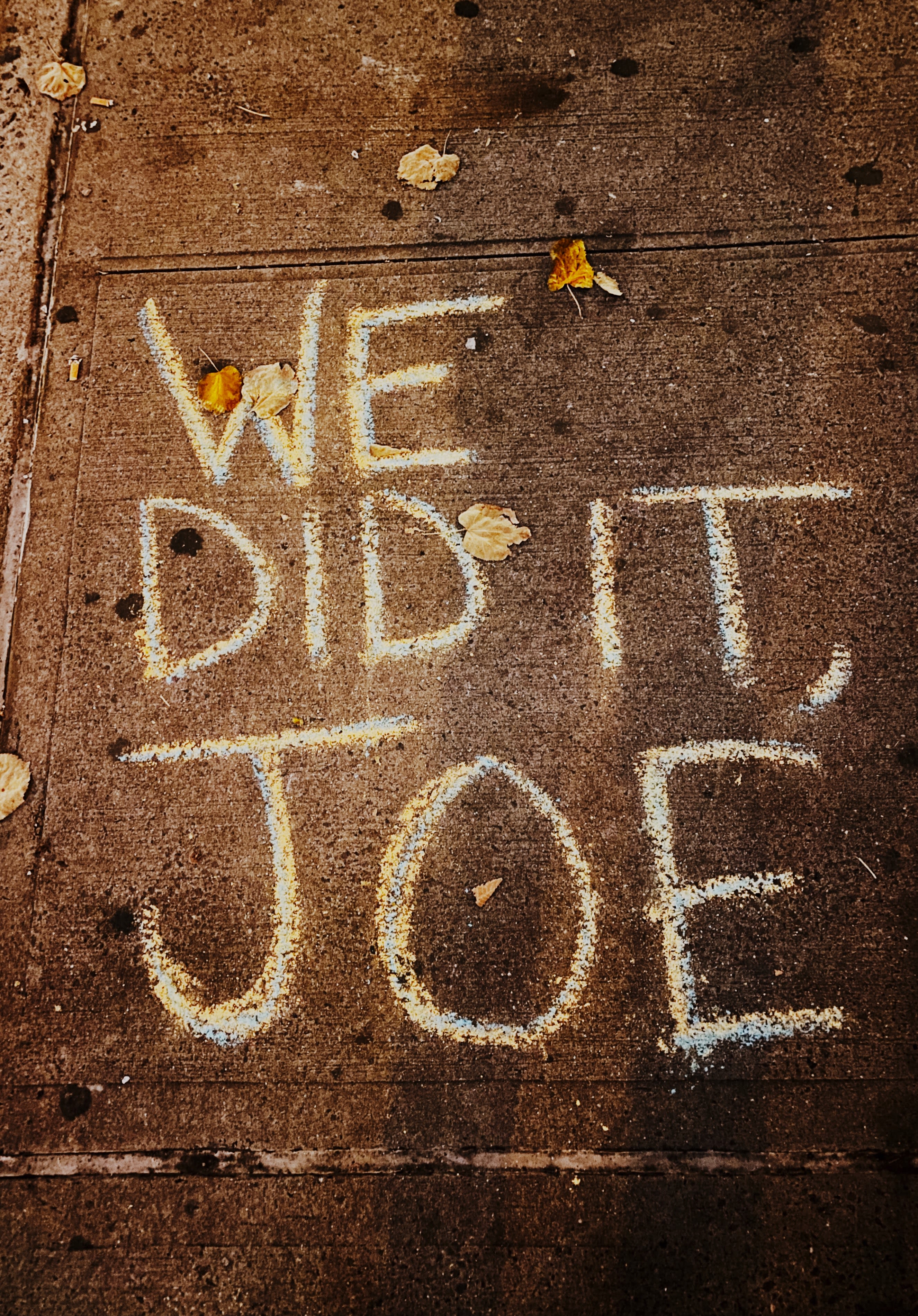
(Photo Credit: Jon Tyson)
(Photo Credit: Jon Tyson)
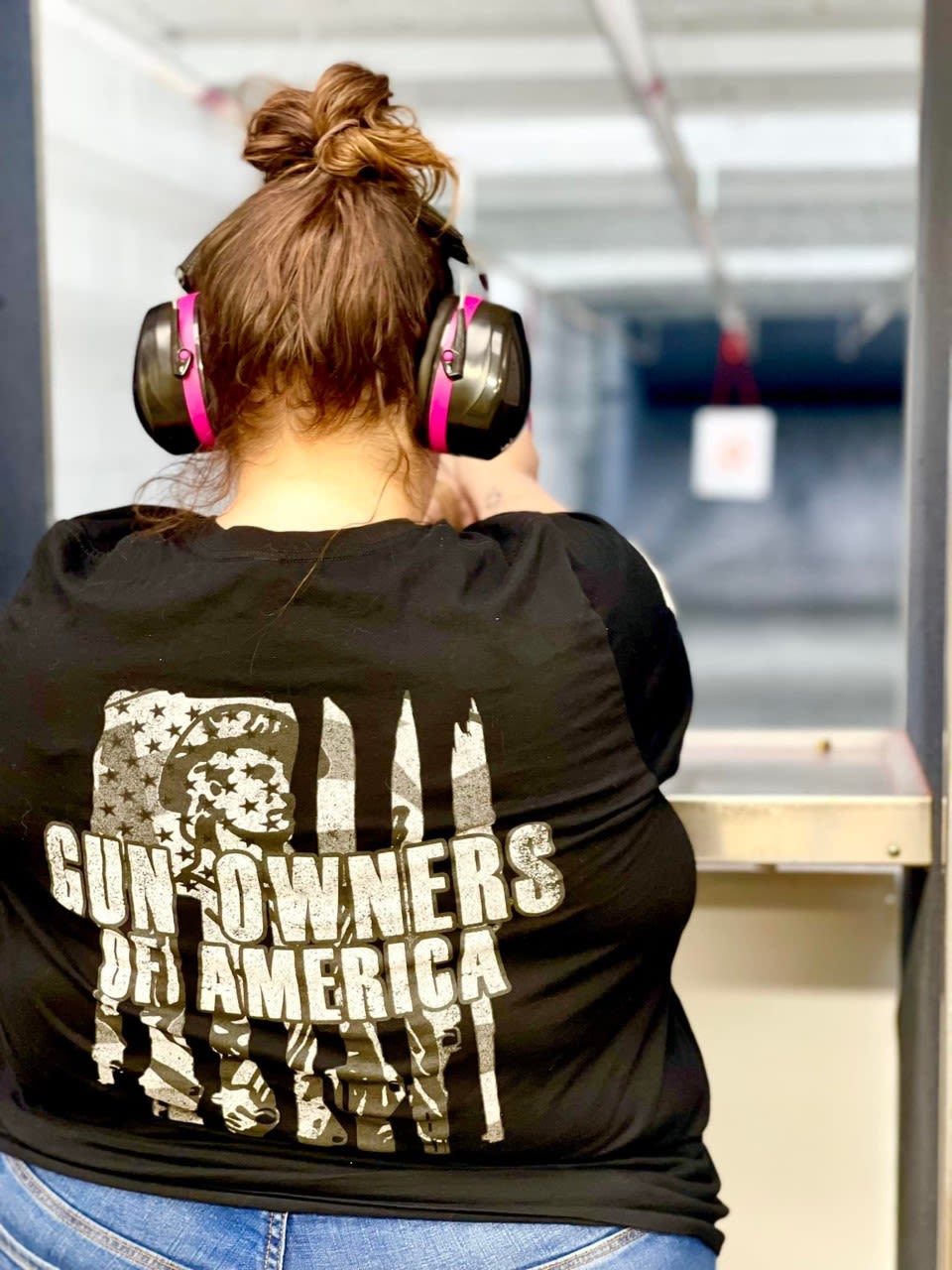
(Photo Credit: GOA)
(Photo Credit: GOA)
“Shocking” and “unbelievable”, two words that were used by interviewees to describe the lack of government intervention before the legislation sign-off on June 25th. All words, no action: “We need to put an end to this”, politicians have repeated this same clichéd phrase after every massacre, but little action ever follows… Ernest Coverson, gun violence campaign manager at Amnesty International, blames the reluctance to make meaningful change on politics: “it’s about politics and funding. Whoever pays the money, gets to call the shots. The NRA [National Rifle Association] is funding campaigns for politicians, the politicians are then made to answer to them with regard to what we’re going to vote for”. In 2019, the NRA spent $3.22 million to benefit the political campaigns of senators who oppose gun safety legislation and refuse to support common-sense gun reform, like expanding background checks and banning assault weapons.
The following table shows politicians who have benefitted most from NRA funding throughout their careers, the strictness of the gun laws and the gun deaths per 100 people in their state:
In US states where the governor has received millions in funding from the NRA, all except two, rank outside the 50th percentile of all states in terms of gun laws. Clearly, there is a correlation between NRA funding and the strength of gun laws as every state on the list was registered below average. Worse still, 8 of 12 states were given a grade of ‘F’ related to firearm registration, firearm permits, concealed carry and open carry.
This data poses more questions in the gun control debate: Firstly, are significant gun control measures really possible while governors work hand-in-hand with pro-gun lobbies? Currently, it feels like a standoff between state and federal governments. But the federal government needs to set some national precedence due to the severe nature of gun violence, Ernest says: “We [Amnesty] have encouraged and pushed the federal government to have some standards across the country that every state should have to abide by, in regard to access to firearms.”. Secondly, if politicians are at the mercy of the NRA, do they actually care about gun violence? Those who do care, don’t have the courage to put forth legislation and fight for it, as Ernest explains: “they will introduce legislation, but we need them to take a stand and say, “this is wrong let’s do something about it”, then force individuals to take a stand and make noise”. But often these voices are silenced, and the politicians shoved to the backbenches. The last question one should ask is who’s making the decisions? The truth… no one. On one side you have Republican politicians who are seemingly influenced by the NRA and on the other, Democrats who don’t have the backbone to push through meaningful legislation and really stand behind it. “So, we find ourselves 30 years later with no change”, Ernest concludes.
Although the new legislation tackles some of these issues, Ernest Coverson says: “The new legislation doesn’t go far enough. It’s a stepping-stone, a good first step, but it’s most definitely not the end and it still took us 30 years to get here. It only enhanced background checks to restrict juveniles under 21 so if they want to purchase an AR-15, which is used for most mass shootings, they have to open up their juvenile records”. Amnesty is disappointed that there was no mention of individuals over 21 and suggests stricter background checks, like backdating a buyer’s criminal records, should apply to everyone trying to purchase a gun, not just for youths.
In contrast, Mike Hammond, spokesperson for Gun Owners of America, believes the new legislation goes too far: “my thoughts are that it’s unconstitutional. The legislation says the government can open your juvenile records but in America, if you’ve been tried as a juvenile, you basically have no due process and certainly no right to a jury. So, to take an adult (from 18 to 21) and say we’re stripping you of your constitutional right because of a proceeding in which you had no due process and went through when you were 12 or 16 is a travesty”.
The constitutional right Hammond is alluding to is the “right to bear arms”. It decrees “a well-regulated militia being necessary to the security of a free state, the right of the people to keep and bear arms, shall not be infringed”. The bill of rights and the second amendment, drafted by James Madison, was ratified in 1791 by then-President Thomas Jefferson.
In the following 200 years the second amendment was untouched and was always associated with military service. That was until the 1960s when the NRA campaigned for members of the public to own a gun. They declared the government were trying to take their second amendment right because they wanted to remove all forms of freedom on their quest for control. They shared their propaganda in TV interviews, advertisements and, even, held public speeches. This propaganda was such a success that by 2008 when the legislation underwent its first tweak, permitting personal ownership of a gun, many Americans already presumed the legislation to be true.
According to a corpus linguistics professor, Dennis Baron, this perception has been misinterpreted: “The general understanding of “bear arms” in 1789 was it had something to do with service in the military. There were six drafts of the second amendment and every one of them mentioned membership in a militia and connected bearing arms to service in the militia rather than anything to do with the individual carrying of guns”. Professor Baron looked specifically at corpora that covered the constitutional era and the decades immediately preceding and following it. He searched for the term “bear arms” in digitized newspaper databases and historical American English literature that covered the 18th and 19th centuries. He discovered “bear arms” overwhelmingly appears in a context that refers to soldiers, army, and war: “I found around 900 individual and unique uses of the term bear arms and of those uses, I only found 7 that had nothing to do with a military sense”.
During the 2008 trial, the “militia clause” was debated. The verdict was that it presented one reason to own a gun but not the only reason. Justice Scalia also addressed the wording ‘bear arms’ and he concluded “it means pretty much what it means today: to have and carry weapons”. A lot of scholars see that as an incredible misreading, forcing the words into an unnatural sense to fit what the majority of the Justices wanted it to mean: “It’s wrong. It's totally politically driven”, Professor Baron says. “For more than two centuries the courts have pretty much always concluded the second amendment as something to do with military service while individual self-defence was a completely different legal matter”. The decision by Justice Scalia, an identified Republican, reversed the judicial thinking of the amendment that had been in place for centuries. Up until 2008, “bear arms” was a non-constitutional issue. But this is perhaps just another example of the Justices pushing their conservative ideologies.
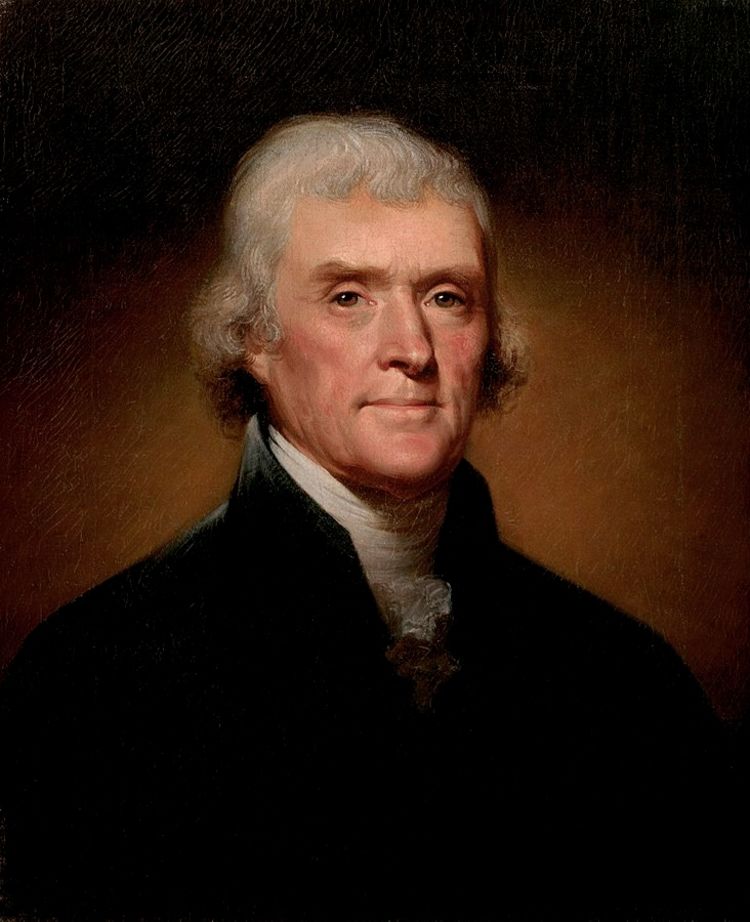
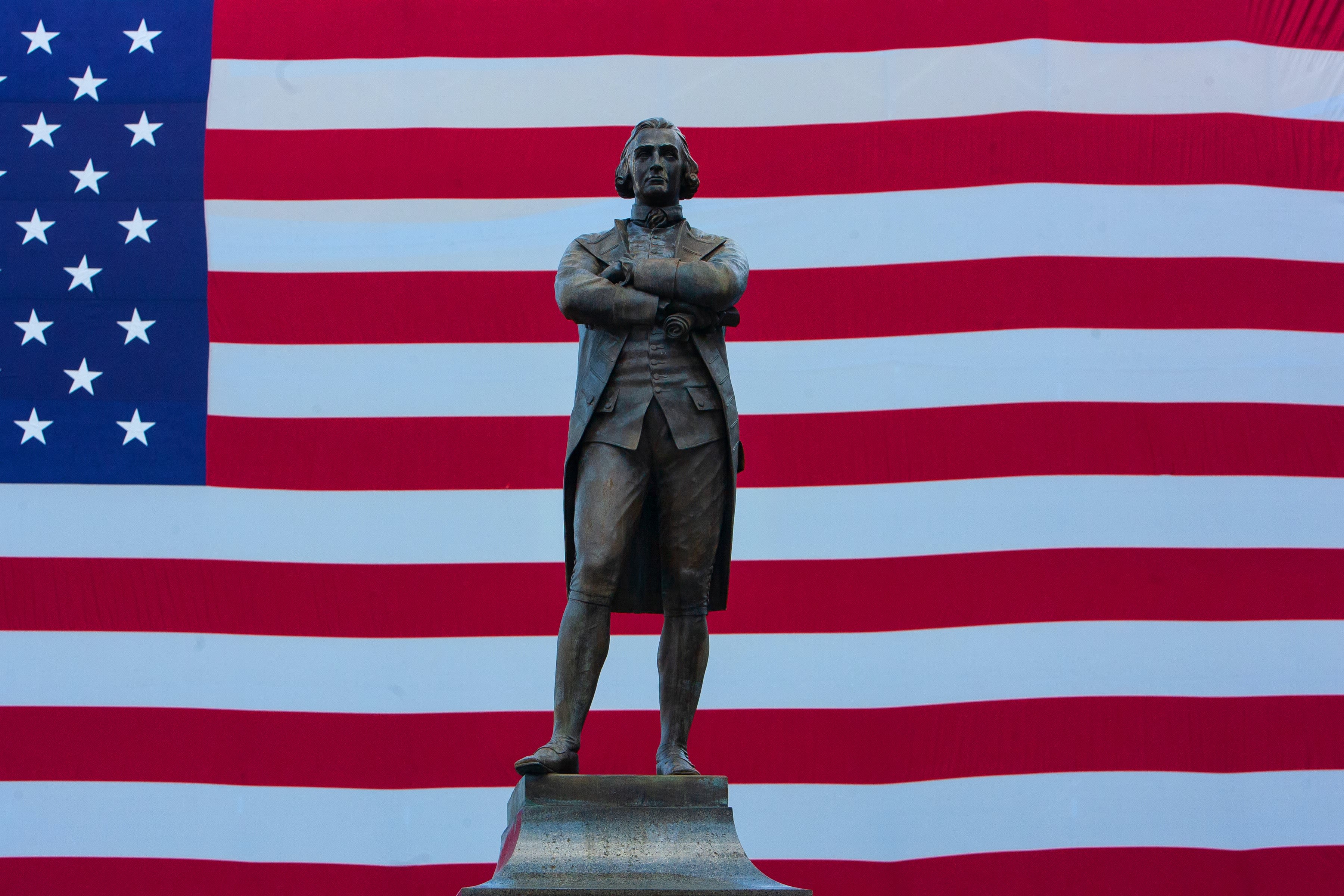
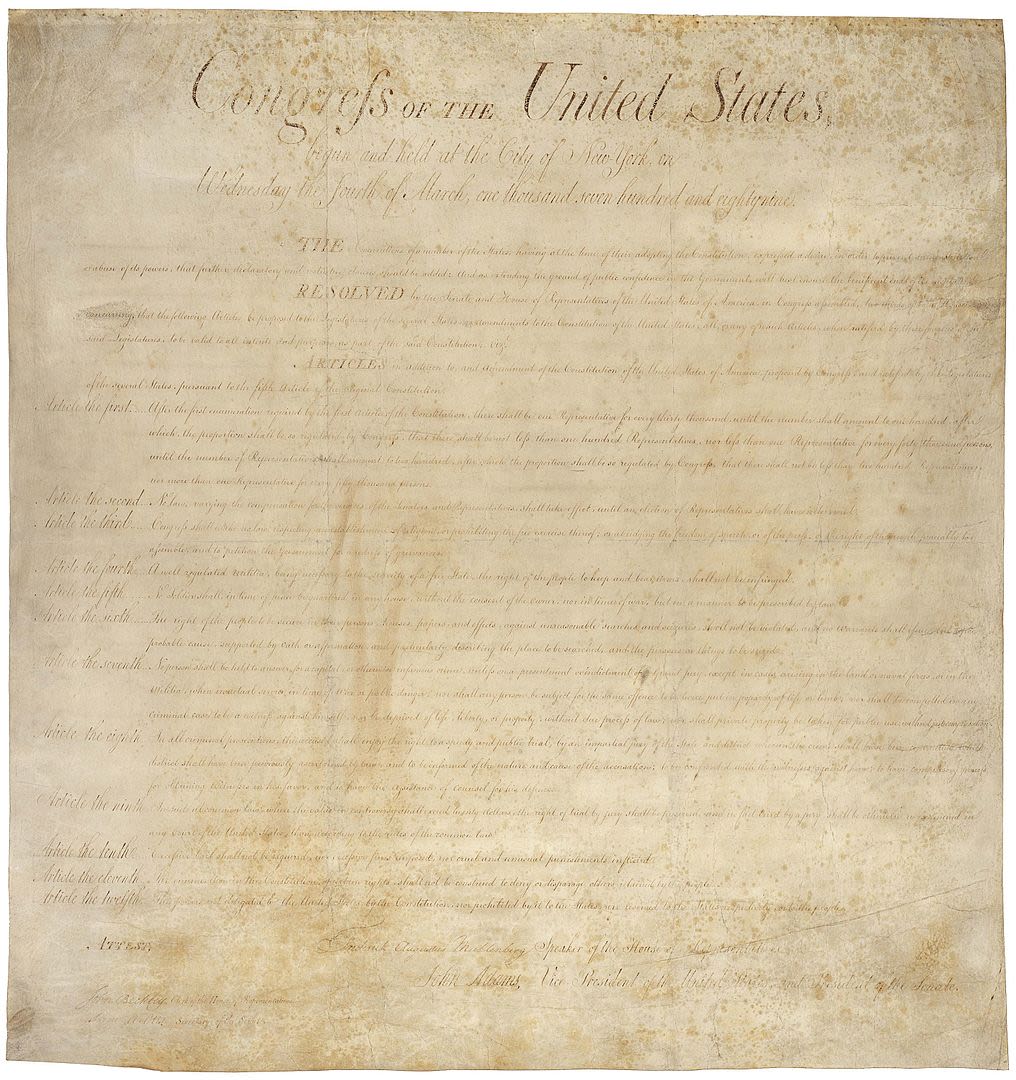

(Photo Credit: Gayatri Malhorta)
(Photo Credit: Gayatri Malhorta)
The outcome of the Heller case in 2008 allows individuals to keep guns for “self-defence” and that is the argument often copied and pasted by gun enthusiasts when they attempt to justify the necessity of guns. Mike Hammond was no different, he told a tale of his friend’s near-death experience: “in 1998/99 a man broke into the Capitol and shot the Capitol police officers standing by the metal detectors. The guy then walked down the hallway and turned right and shot another police officer. But If he had turned left my friend would be dead”. He adds: “my friend, who was in the most protected building in the world, always says “I wish I had a gun” so he could have protected himself”. Yes, the story is thought provoking, but it is also rife with irony. A perpetrator equipped with a gun, shoots and kills three armed officers and the takeaway is, “I wish I had a gun” instead of “I almost died at the mercy of a gun” or “look at the destruction these guns cause”?
Furthermore, guns are rarely used in self-defence. Of the 29.6 million violent crimes committed between 2007 and 2011 only 0.79% of victims (235,700) protected themselves with the use of a firearm. In 2010 there were 230 “justifiable homicides” in which a bystander used a firearm to kill a felon, compared to the 8,275 homicides in which a gun was the weapon of choice. That equates to one justifiable homicide for every 36 criminal homicides. Stopping a mass shooter with a gun is also rare. According to CNN, of the 434 active shooter attacks, between 2000 and 2021, just 22 ended with an armed civilian shooting the attacker. But of those 22, 10 were either from a security guard or off-duty police officer. It takes a certain type of brave ‘hero’ to shoot, or even confront, a gunman. That’s why we see few instances of self-defence actually enacted, even in break-ins. Of the 84.5 million property crimes committed between 2007 and 2011 only a mere 0.12% of victims protected themselves with a firearm.
This idea of self-defence poses another problem, the glorification of vigilantes. A mantra of the far-right is “we need to protect our cities”. Blame is often directed at the police for not doing enough so extremists assign themselves a responsibility to protect and serve, despite it not being their duty or job. We saw these “acts of heroism” in Kenosha as armed men flooded the streets vowing to protect the city without anyone ever asking.
Guns in 1791
Guns in 2021
When the second amendment was adopted in 1791, guns fired three rounds per minute (RPM). Nowadays, automatic assault rifles can reach upwards of 900 RPM, perhaps not what Thomas Jefferson envisaged when he approved the bill of rights. And perhaps why he believed the country's constitution should be rewritten every 19 years. These guns are clearly not used for self-defence, in fact, semi-automatic rifles were featured in four of the five deadliest mass shootings and have been responsible for 52 massacres since 1985, according to Statista. But Gun Owners of America don’t believe weapon-type is the problem: “machine guns and semi-automatics have never been the problem. Semi-automatics are used in a minuscule percentage of crimes, I think fewer than 2% of all homicides”. Maybe 2% of all crimes but they represent 39.4% of mass murder.
Even so, shouldn’t there be tougher restrictions on purchasing rifles that cause mass destruction? “No” Mike replies. “if they banned semi-automatic guns tomorrow, it would do nothing in terms of making mass shooters unable to accomplish what they want to accomplish and the next day they would say, banning semi-automatics hasn’t done anything so we're going to ban all guns. It’s just a step towards massive gun control”.
Although Amnesty International is not against the second amendment they do propose common-sense laws should be implemented, like the banning of assault weapons and high-capacity magazines, Coverson says: “When it [the constitution] was written these 80 million varieties of guns were not available, so we have to evolve our laws at the same time”. The Uvalde massacre presents a perfect example of common-sense laws needing to be utilised. Salvador Ramos legally bought two AR-15 rifles and 1,657 rounds of ammunition prior to the shooting. The gunman was carrying 60 magazines in total when he charged into the school. By comparison, an average US soldier would usually take just 210 rounds – seven magazines – into combat. No newly turned 18year old should have such ease of access to an arsenal of that scale. Limitations on what buyers can purchase at any one time need to be introduced.
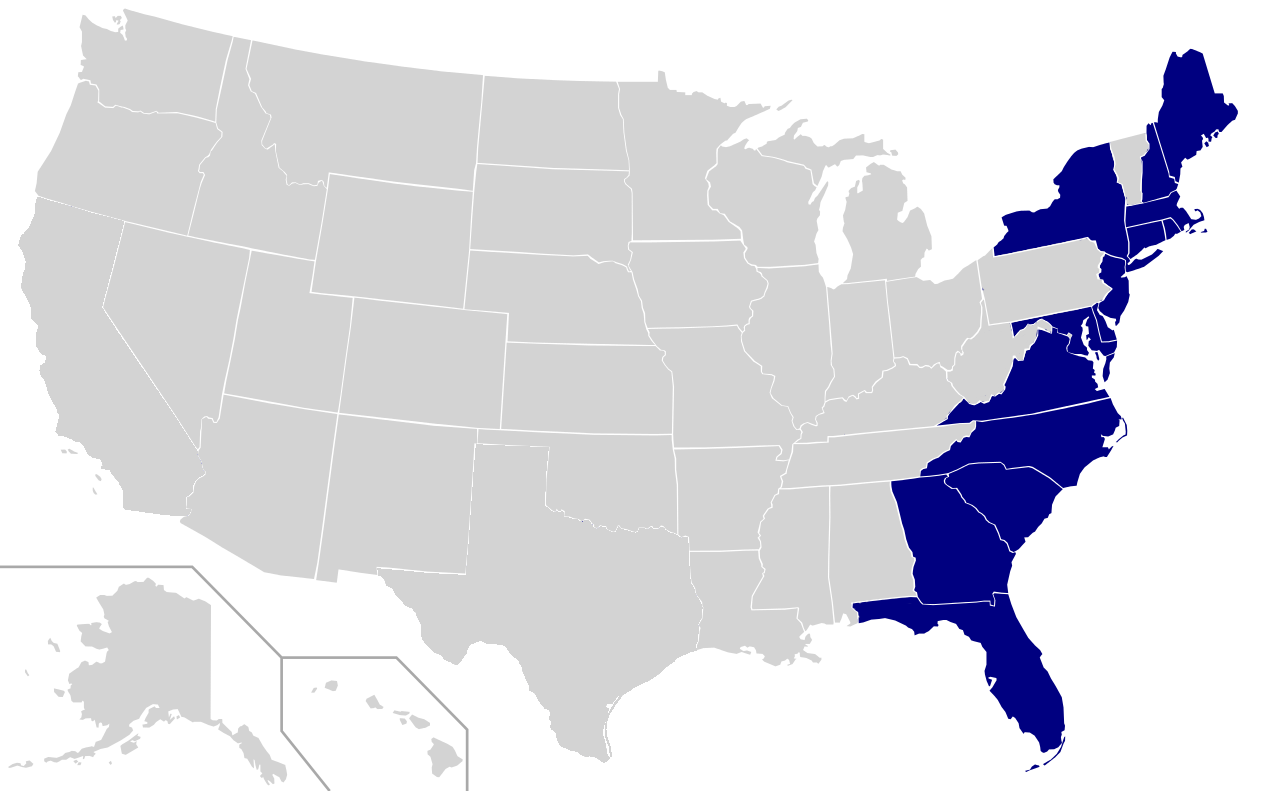
States "The Iron Pipeline" runs through (Photo Credit: via Wikimedia Commons)
States "The Iron Pipeline" runs through (Photo Credit: via Wikimedia Commons)
However, even if state laws prohibited the legal sale of guns, that still wouldn’t solve America’s gun crisis. Gun trafficking is rife in the United States. Even though the government, in the bipartisan agreement, took a positive step by making gun trafficking a federal crime, it should waste no time cracking down on gun traffickers and halting the rise of out-of-state guns breaching borders. Between 2010 and 2020, more than 600,000 guns originated from out of the state they were recovered in, meaning that they were likely trafficked. Mike Lucero explained the real-life scenarios that play out in his city: “Tijuana is 15 minutes from me. People bring guns back and forth all the time. This is one of the most used gun borders in the western hemisphere, the reality of them stopping every person to check them is absurd. People can easily walk down there buy a gun in a store and walk right back. That’s what’s sad about Southern California”.
This isn’t just a problem in the western hemisphere, it extends to the east coast too. Most prominently, along the infamous “Iron Pipeline”, an interstate that connects states with stricter gun laws like New York and New Jersey with states that have looser gun laws like Pennsylvania and Georgia. In 2021, Federal Law allowed individuals to transport legally acquired guns across state borders for “lawful purposes”. This stretch of road, traversing the north and south of America, enabled gun traffickers to exploit this law and move guns freely across state lines. According to the Bureau of Alcohol, Tobacco, Firearms (ATF), approximately 50,000 guns in 2021 were reportedly smuggled. To illustrate this issue, 86% of all guns in New York originate from states along the ‘Iron Pipeline’. The movement of guns tends to flow from states with less stringent gun laws to states with strong gun laws like Illinois. ATF data shows that, in Illinois, one in every two guns associated with crime come from other states, such as Indiana, Kentucky, Mississippi, Missouri, or Wisconsin. Gun trafficking is a lucrative business. Traffickers can purchase handguns in Georgia for $100 and charge upwards of $600 in New York. The bottom line is this: under federal law and the law of most states, anyone so inclined can buy huge quantities of cheap, easily concealed handguns and sell them to others indiscriminately, often without violating any law and usually without having to worry about getting arrested. It is a low risk, high reward enterprise.
In this same vein, the US has to contend with corrupt Federal Firearm Licensees (FFLs) selling illegally. FFLs are licensed to import and/or sell firearms for commercial gain. Unfortunately, many exploit these privileges: half of the dealers sold firearms without a proper background check and 10% knowingly sold firearms to individuals that were prohibited by law from purchasing a weapon. Alarmingly, of the dealers who breached their licensing, only 3% had their licenses revoked. This degree of leniency towards committing a federal crime, is likely the reason there are so many corrupt firearms dealers.
If they aren’t backhand buying or dodgy dealing, they’re stealing… 380,000 firearms are stolen from private owners every year. Mike Lucero admits theft was the way he attained guns as a teen: “I remember going to a girl’s home and the first thing we’d all look for is if their parents had guns and we would go after them. Sadly, at that age, I was so indoctrinated by that lifestyle”. He continued to share: “Also, my dad and my grandfather were avid gun users, so I took around four or five guns and utilised them, disassembled them and disposed of them”.
Amnesty International advocates for legislation called Ethan’s Law which is aimed at preventing these thefts from occurring, Ernest tells The Breaker: “if individuals do have a firearm in their home and there are young people - students, kids, and children - in the house, the firearms should be put in some safe storage like a safe or locked cabinet”.
It’s becoming clear that gun reform schemes, like Australia experienced in 1996, are unfeasible in the US. As Mike Hammond asserts: “suffice to say, Australia is a different country from the United States”. It appears the word “sweeping” means something different in both countries too. “Sweeping gun control” in Australia meant the banning of assault weapons (including shotguns), enacting a national program to buy back guns, eliciting a 28-day waiting period for gun purchases, prohibiting private sales of firearms and requiring all weapons to be registered to their owners. Meanwhile in America, “sweeping” refers to tougher background checks for the under 21s… Despite homicide rates dropping and the absence of any mass shootings in Australia since the bill passed in 1996, the interviewees I spoke with were not in favour of complete gun control or potential buyback schemes in their country.
Ernest Coverson says: “there are some activists that want complete gun control, we [Amnesty International] don’t. But if there is a second amendment there should be some common-sense laws in play”.
Mike Lucero explains: “There are some buyback schemes here. But gang members are like, “I'm gonna get $100 to $200 for this. No way, this thing keeps me from dying. I’m holding on to that weapon.” That’s the reality of it”.
Mike Hammond notes: “Most criminals don't get their guns from gun stores; they get their guns from the black market. If it was impossible for ordinary citizens to legally buy guns, the only thing you would do is ensure is the only people who have guns are the criminals”.
Regarding Mike Hammond’s point, the dark web is a hotspot for firearm deals. Firearms were the most common listings on the dark web sitting at 42% of total items, followed by arms-related digital products at 27% and then, ammunition with 22%. Arms-related digital products relate to models that can be turned into fully working firearms and tutorials that show you how to manufacture homemade guns. According to Mike Lucero, the procedure of purchasing a gun via the dark web is straightforward: “I could go on the computer right now and buy a ghost gun, there is still an open state to get them”. A ghost gun is a firearm made from mail-order kits without serial numbers. The dangers of the dark web are unimaginable, it could potentially become the platform of choice for troubled teens or gang members to bypass state laws to obtain weapons and ammunition behind the curtain of anonymity which the dark web provides. The value of the arms trade on the dark web, estimated to be $80,000, represents a worrisome thought of thousands of untraced firearms entering the real world (upwards of 136 every month and potentially rising).
